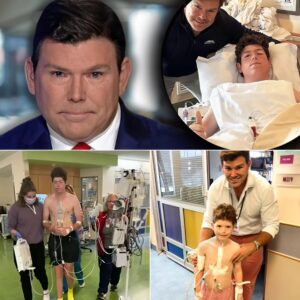Chuck Norris’s Silent Farewell: A Legend Grapples with Love, Loss, and Legacy
By Elena Vasquez, Entertainment Correspondent
NAVASOTA, Texas — At 85, Chuck Norris, the indomitable action hero whose name became synonymous with American grit, is quietly stepping away from the spotlight. The man who stared down Bruce Lee in The Way of the Dragon and embodied justice as Cordell Walker in Walker, Texas Ranger is no longer the invincible warrior of Hollywood lore. Behind the myth lies a man shaped by profound loss, unyielding resilience, and a private battle that no amount of fame could shield him from. As Norris retreats to his Texas ranch, whispers of a hidden health crisis and a life redefined by love and sacrifice have begun to unravel the legend, revealing a deeply human story.
Norris’s journey began far from Hollywood’s glare, in the hardscrabble town of Ryan, Oklahoma, in 1940. Born Carlos Ray Norris, he grew up in a fractured home haunted by his father’s alcoholism and rage. Ray Norris, a World War II veteran, returned from battle a shadow of himself, drowning his demons in whiskey and leaving his family to navigate a minefield of fear. In his memoir Against All Odds, Norris described his father as a “negative role model,” a man whose chaos forged a young boy’s resolve never to succumb to weakness. At 14, Chuck stood trembling with a hammer, shielding his mother, Wilma, from his father’s wrath—a moment that crystallized his lifelong vow to rise above his past.

This vow propelled him through a childhood of poverty and shame into the U.S. Air Force, where he discovered martial arts in Korea. Taekwondo and judo transformed the shy, awkward boy into a disciplined warrior. By the 1960s, Norris was a karate champion, dominating the professional middleweight circuit for six years. His schools became sanctuaries for those seeking strength, mirroring his own journey from brokenness to purpose. Yet, it was his 1972 clash with Bruce Lee in The Way of the Dragon that launched him into Hollywood’s orbit. The iconic Colosseum fight, a brutal ballet of East meets West, didn’t bury Norris—it birthed him as a star.
Through the 1980s, films like The Octagon and The Delta Force cemented Norris as America’s action hero, a stoic patriot who embodied resilience in a turbulent era. Walker, Texas Ranger, running from 1993 to 2001, immortalized him as a global icon, broadcast in 100 countries. Yet, behind the fistfights and accolades, Norris carried scars no camera could capture. The 1970 death of his brother Wieland, killed at 21 in Vietnam while saving his patrol, left a wound that never healed. “It tore a hole in my heart,” Norris later confessed. Each on-screen soldier’s uniform he wore was a silent tribute, laced with grief.
The loss of his friend Lee Atwater, the fiery political strategist, in 1991 at age 40, further deepened Norris’s reckoning with mortality. Atwater’s collapse during a speech and subsequent battle with illness forced Norris to confront life’s fragility. “If it could happen to him, it could happen to me,” he admitted, standing by Atwater’s coffin. These losses—Wieland’s sacrifice, Atwater’s untimely death—stripped away the illusion of invincibility, revealing a man who fought not just on-screen foes but the unrelenting march of time.
By 1998, Norris found solace in love, marrying former model Gena O’Kelley, then 35, whose warmth filled the voids left by decades of loss. Their twins, Dakota and Danilee, born in 2001, brought joy to a life battle-hardened by tragedy. But in 2013, at 73, Norris faced his darkest challenge yet. A routine MRI for Gena triggered a catastrophic reaction to gadolinium, a contrast agent linked to a rare condition known as gadolinium deposition disease. Her nervous system unraveled—tremors, muscle atrophy, and speech loss confined her to a shadow of her vibrant self. “She was dying in front of me,” Norris recalled, his voice breaking in a rare moment of vulnerability.

Norris abandoned his career, forsaking films and public appearances to care for Gena. Over $2 million was spent on treatments—experimental therapies, cross-country hospital stays, even a desperate trip to China for stem cell therapy. Each failure crushed him, yet he remained steadfast, a warrior not of the screen but of the heart. “My whole life became about keeping her alive,” he said. For their twins, then 12, watching their mother fade and their father weep redefined their understanding of love’s endurance. Gena, battling guilt over Norris’s sacrifices, fought alongside him, their bond a testament to resilience born of devotion.
Now, at their sprawling Navasota ranch, Norris lives a quieter life, surrounded by horses and the spring water business he built as a legacy. His $70 million fortune, amassed through films, TV, and ventures, offers comfort but no shield against the shadows of Gena’s ongoing health struggles. Hollywood whispers of a “hidden diagnosis” surrounding Norris himself, but no confirmation has emerged. Instead, his retreat feels like a deliberate choice—a man who once conquered screens now prioritizes the woman who anchors his world.
Norris’s legacy transcends his action-hero persona. He is not the unbreakable myth of memes but a man forged in pain, tempered by loss, and defined by love. His battles—against a violent childhood, a brother’s death, a friend’s passing, and a wife’s illness—reveal a strength deeper than any on-screen punch. As he told a confidant, “I’m lucky to have had this career, but it all started with surviving.” At 85, Chuck Norris endures, not as a legend untouchable by time, but as a husband, father, and survivor who proved that true heroism lies in standing firm through life’s darkest storms.





